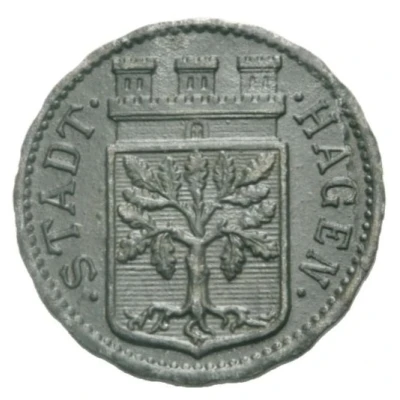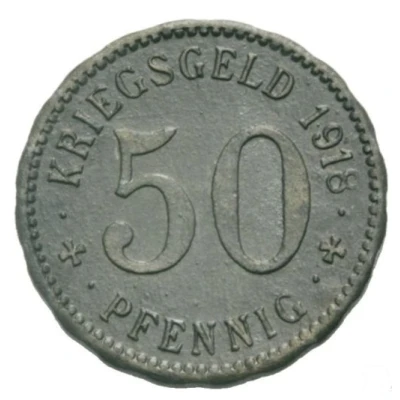


50 Pfennigs - Hagen
| Zinc | 3.4 g | 24.2 mm |
| Issuer | City of Hagen in Westfalen (Prussian province of Westphalia) |
|---|---|
| Emperor | William II (Wilhelm II) (1888-1918) |
| Type | Standard circulation coin |
| Years | 1917-1918 |
| Value | 50 Pfennigs (50 Pfennige) (0.50) |
| Currency | Mark (1914-1924) |
| Composition | Zinc |
| Weight | 3.4 g |
| Diameter | 24.2 mm |
| Thickness | 1.4 mm |
| Shape | Round |
| Technique | Milled |
| Orientation | Medal alignment ↑↑ |
| Demonetized | Yes |
| Updated | 2024-10-04 |
| Numista | N#37027 |
|---|---|
| Rarity index | 60% |
Reverse
Pearl rim, legend surrounding denomination centered
Script: Latin
Lettering:
KRIEGSGELD 1918
50
∙✢∙ PFENNIG ∙✢∙
Edge
Scalloped
Comment
Issuing authority: [Stadt, Westfalen]Interesting fact
One interesting fact about the 50 Pfennigs - Hagen 1917-1918 coin is that it was issued during a time of economic turmoil in Germany. The country was experiencing hyperinflation, and the value of the German mark was rapidly decreasing. In response, the government introduced a new currency, the "Notgeld," which included coins like the 50 Pfennigs - Hagen 1917-1918. These coins were made of zinc, a cheaper metal than the traditional silver or gold, and were designed to be used as small change during this period of economic instability. Despite their low value, these coins are now highly sought after by collectors due to their historical significance and rarity.